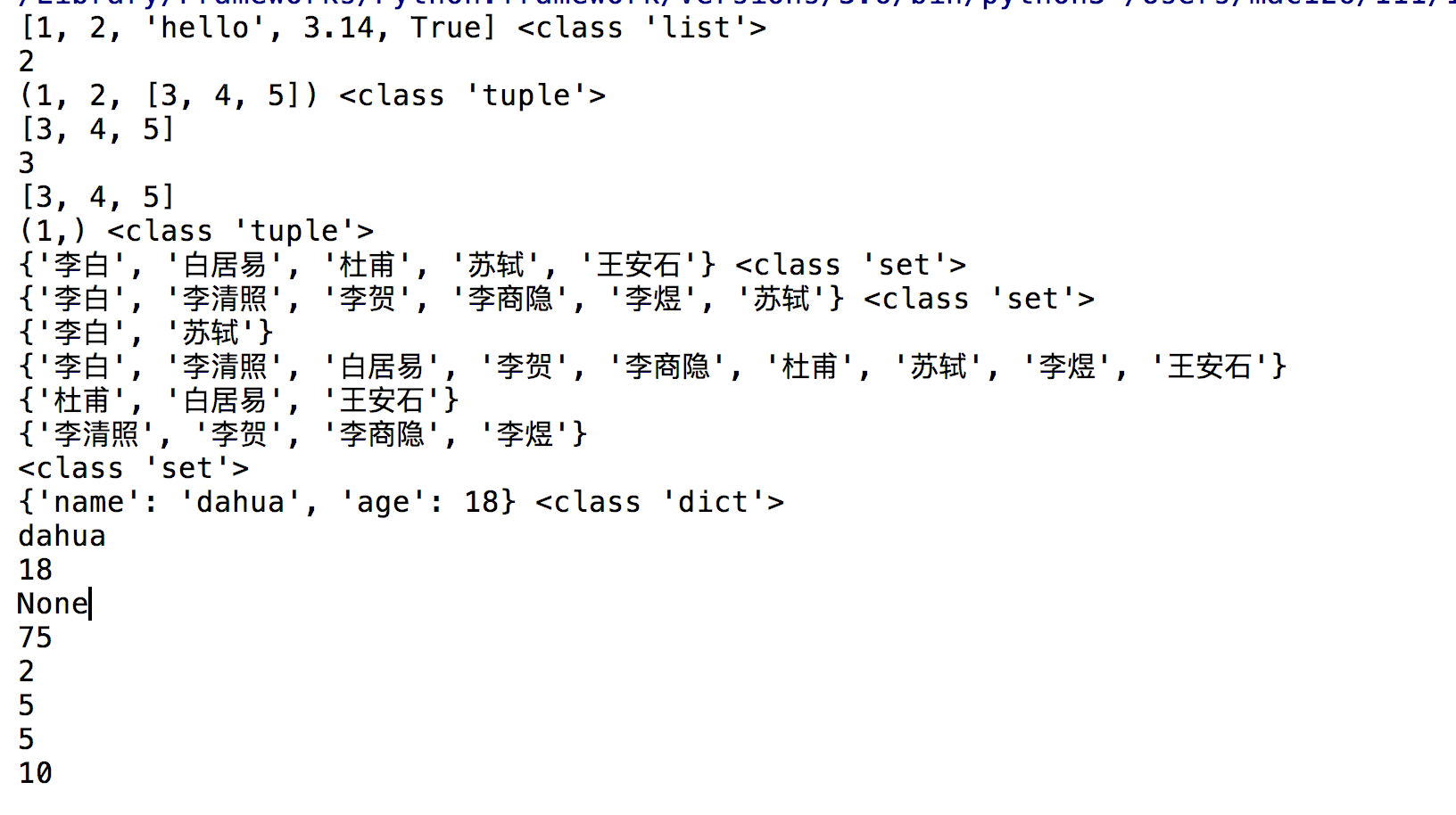# 列表 lt = [1, 2, 'hello', 3.14, True] print(lt, type(lt)) # 通过下标获取元素,有越界问题 print(lt[1])#下标是从零开始的,下标为一,取出列表里面第二个元素 # 元组 tp = (1, 2, [3, 4, 5]) print(tp, type(tp)) # 也是通过下标进行访问 print(tp[2]) print(tp[2][0])#取出元祖里列表元素里面的第一个值 print(tp[2][0:])#取出元祖里列表元素里面的所有值 # 定义一个元素的元组后面要添加一个, tp2 = (1,) print(tp2, type(tp2)) # 集合:元素不能重复,并且是无序的 s1 = {'李白', '杜甫', '白居易', '王安石', '苏轼', '李白'} s2 = {'李白', '李商隐', '李清照', '李贺', '李煜', '苏轼'} print(s1, type(s1)) print(s2, type(s2)) # 交集 print(s1 & s2) # 并集 print(s1 | s2) # 差集 print(s1 - s2) print(s2 - s1) # 定义空集合不能使用{},这是留给定义空字典使用的 # 应该使用set() # s3 = {} # print(type(s3)) s4 = set() print(type(s4)) # 字典 d = {'name': 'dahua', 'age': 18}#键值对形式,前面为健,后面为值,键必须唯一 print(d, type(d)) # 可以根据键获取值 print(d['name']) # 当键不存在时或报KeyError错 # print(d['height']) # 可以通过get方法根据键获取值, print(d.get('age')) # 当键不存在时不会报错,会返回None print(d.get('height')) # 可以设置默认值,有对应的键返回其值,没有时返回设置的默认值 print(d.get('weight', 75)) # 统计元素个数,字典统计的是键值对个数 print(len(d)) print(len(s1)) print(len(lt)) print(len('helloworld'))
